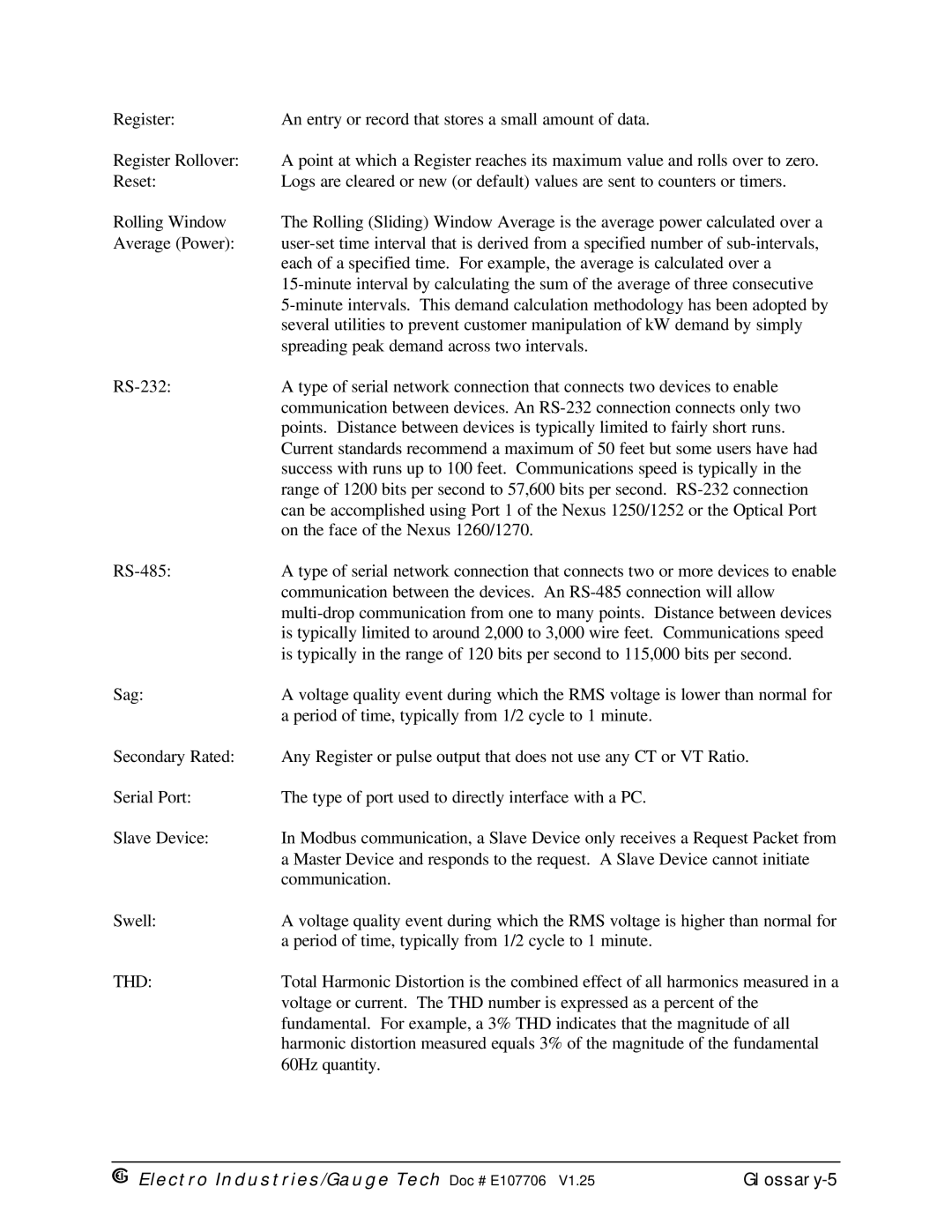Register: | An entry or record that stores a small amount of data. |
Register Rollover: | A point at which a Register reaches its maximum value and rolls over to zero. |
Reset: | Logs are cleared or new (or default) values are sent to counters or timers. |
Rolling Window | The Rolling (Sliding) Window Average is the average power calculated over a |
Average (Power): | |
| each of a specified time. For example, the average is calculated over a |
| |
| |
| several utilities to prevent customer manipulation of kW demand by simply |
| spreading peak demand across two intervals. |
A type of serial network connection that connects two devices to enable | |
| communication between devices. An |
| points. Distance between devices is typically limited to fairly short runs. |
| Current standards recommend a maximum of 50 feet but some users have had |
| success with runs up to 100 feet. Communications speed is typically in the |
| range of 1200 bits per second to 57,600 bits per second. |
| can be accomplished using Port 1 of the Nexus 1250/1252 or the Optical Port |
| on the face of the Nexus 1260/1270. |
A type of serial network connection that connects two or more devices to enable | |
| communication between the devices. An |
| |
| is typically limited to around 2,000 to 3,000 wire feet. Communications speed |
| is typically in the range of 120 bits per second to 115,000 bits per second. |
Sag: | A voltage quality event during which the RMS voltage is lower than normal for |
| a period of time, typically from 1/2 cycle to 1 minute. |
Secondary Rated: | Any Register or pulse output that does not use any CT or VT Ratio. |
Serial Port: | The type of port used to directly interface with a PC. |
Slave Device: | In Modbus communication, a Slave Device only receives a Request Packet from |
| a Master Device and responds to the request. A Slave Device cannot initiate |
| communication. |
Swell: | A voltage quality event during which the RMS voltage is higher than normal for |
| a period of time, typically from 1/2 cycle to 1 minute. |
THD: | Total Harmonic Distortion is the combined effect of all harmonics measured in a |
| voltage or current. The THD number is expressed as a percent of the |
| fundamental. For example, a 3% THD indicates that the magnitude of all |
| harmonic distortion measured equals 3% of the magnitude of the fundamental |
| 60Hz quantity. |
e Electro Industries/Gauge Tech Doc # E107706 V1.25 |
|
